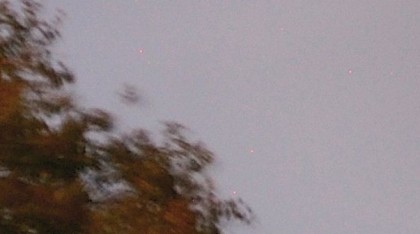How to avoid common mistakes at every shutter speed
From zoom blur to freezing the action, get great results every time
Fitting a polariser onto the front of your lens is a great way of reducing the amount of light reaching the sensor, allowing you to reduce the shutter speed by half or more.
SEE MORE: 10 reasons your photos aren't sharp (and how to fix them)
Long Exposures - 1sec to 30secs

Camera movement
Even with the camera mounted on a tripod it can still move, causing the image to blur. In windy conditions, try weighing down the tripod with your camera bag to minimise the movement.
It's also worth checking that the feet of the tripod are on solid ground (check out our 4 tips for sharper shots when using a tripod).
Suggested shutter speeds to blur movement
- Moving foliage in gentle wind: 30secs
- Traffic trails: 20secs
- Smooth seas: 15secs
- Fast-moving clouds: 8secs
- Waves, retaining some detail: 1sec
What you can do
If you're shooting before sunrise or after sunset, the light levels will change quite rapidly. So you'll have to set a smaller aperture (or use a faster shutter speed) as dawn approaches, or as it gets darker after sunset you'll need to use a larger aperture (or decrease the shutter speed).
For more on how to do this, check out our photography cheat sheet on when to use a small or wide aperture.
Sign up for breaking news, reviews, opinion, top tech deals, and more.
SEE MORE: Expose to the right: the camera technique every landscape photographer must know
Night Photography - 30secs or longer

Hot pixels
Shooting long exposures can also result in hot (or stuck) pixels. These are individual pixels that appear much brighter than those around them due to their response to light.
Using the long-exposure noise reduction feature helps to reduce the visibility of these in your image, but you can also remove them using the Healing Brush in Photoshop.
Suggested shutter speeds for night exposures
- Movement just visible in stars, or full moon-lit landscapes: 2 minutes
- Distinct star trails: 10 minutes
What you can do
When shooting night photography it's common for shots to have much more noticeable noise than normal. To minimise this problem most cameras have a long-exposure noise reduction feature, which can be activated via the main menu.
But there are times when you shouldn't use it (for more on shooting at night, check out the 12 common errors of night photography - and how to fix them).
READ MORE
44 essential digital camera tips and tricks
First Camera Crash Course: simple solutions for mastering your new DSLR
99 common photography problems (and how to solve them)
10 common exposure problems every photographer faces (and how to fix them)